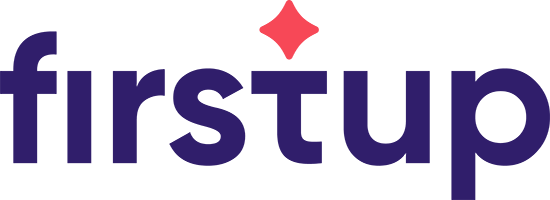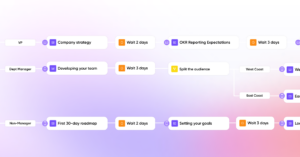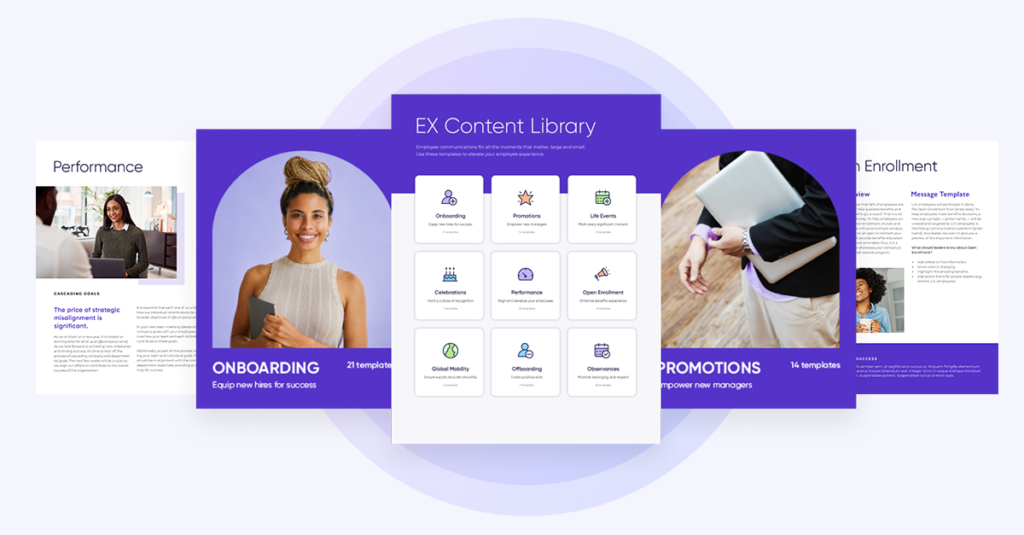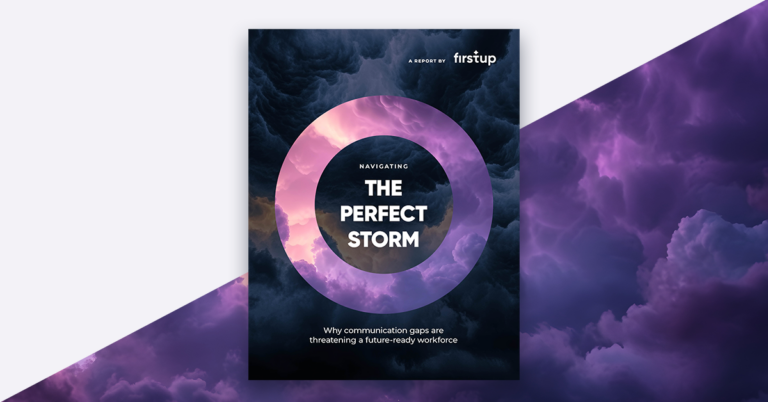Change is everywhere… and faster than ever. In 2025, organizations aren’t just adapting to change; they’re continuously reshaping their cultures, technologies, and internal processes to stay competitive. But even though change is constant, it doesn’t have to be chaotic. That’s where change management comes in, to bring clarity and structure to organizational change.
Today’s successful companies understand that effectively managing change goes far beyond simply rolling out new technologies or policies. It requires a strategic, structured approach to ensure every team member—from executive leaders to frontline employees—understands, accepts, and actively participates in the journey. Without effective change management, even the best-intentioned initiatives can stall, leaving employees disengaged and strategic goals unmet.
At Firstup, we’ve seen firsthand how an effective change management model drives real, measurable outcomes. Whether it’s centralizing communications at Extreme Networks or unifying teams at Newell Brands, strategic change initiatives transform not only how businesses operate, but also how employees feel about their roles and their organization. These are change management wins that go far beyond messaging; they’re about alignment, trust, and follow-through.
In this post, we’ll explore what makes change management critical in 2025, highlighting key strategies, processes, and tools your organization needs to embrace change successfully and sustainably.
Whether you’re leading a transformation or just trying to keep up with evolving expectations, having a strong change management foundation has never been more important.
Key Takeaways
- Change management in 2025 demands continuous communication, not one-time announcements
- A structured, people-first approach to change management reduces resistance and accelerates adoption
- Emotional transitions are just as critical as operational shifts, and models like ADKAR and Bridges help manage both
- Real-time data and feedback loops are essential for measuring progress and adjusting strategy in change programs
- Workforce orchestration connects every employee to change, no matter their role or location
- Empowering managers and recognizing quick wins builds trust and sustains momentum

What is change management?
Change management is a systematic approach designed to guide how organizations prepare, support, and help individuals, teams, and leaders adapt to organizational change. It encompasses the methods and processes used to ensure smooth transitions from one operational state to another, minimizing disruption and maximizing acceptance and effectiveness.
In practical terms, change management involves clearly identifying the need for change, establishing a strategic vision aligned with overall business goals, planning and executing change management initiatives, and continuously monitoring and refining the process. This holistic approach helps mitigate resistance and empowers employees to embrace and contribute positively to new directions.
Understanding the change management process
This typically involves several key stages:
- Identify the need for change: Recognizing internal or external factors—such as technological advancements, market shifts, or competitive pressures—that require organizational adaptation.
- Develop a strategic vision: Crafting a clear vision that aligns the proposed changes with the broader organizational objectives, ensuring that stakeholders understand the rationale and anticipated benefits.
- Plan and implement change initiatives: Creating detailed action plans, assigning roles and responsibilities, engaging key stakeholders, and effectively communicating the steps and expected outcomes.
- Monitor progress and adjust accordingly: Regularly tracking the implementation of change, assessing progress against predetermined key performance indicators (KPIs), and adjusting strategies to overcome obstacles or leverage opportunities as they arise.
Throughout this process, roles such as change leaders, change managers, and project managers are crucial, integrating strong project management practices helps ensure timelines stay on track and that change efforts are executed efficiently. These individuals help navigate the complexities of change, ensuring strategic alignment, stakeholder engagement, and overall success.
When supported by the right tools and communication strategy, the change management process becomes a powerful driver of organizational agility.
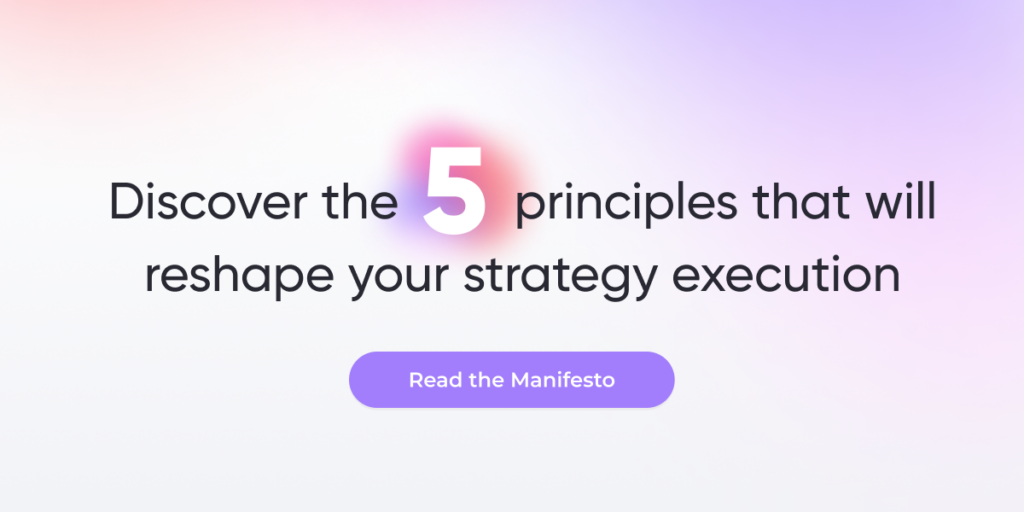
Key components of a successful change management strategy
To manage change successfully, an effective strategy should include several essential components:
- Clear vision and objectives: Establishing a clear and compelling vision for the change initiative is foundational. The vision must align closely with overall business objectives, offering clarity about the expected benefits and the rationale behind the change.
- Stakeholder engagement: Proactively identifying and involving stakeholders (including executive leaders, human resources, managers, employees, and customers) helps to build buy-in and reduces resistance.
- Comprehensive change management program: A structured program, managed by experienced change management and project management professionals, helps ensure the successful execution of change initiatives. This program should include clear milestones, accountability, regular progress reviews, and flexibility to adapt as necessary.
- Effective communication strategy: Developing and implementing an effective communication strategy is critical. Communication must be frequent, clear, and tailored to different stakeholders to address their specific concerns, needs, and expectations.
- Training and support: Providing comprehensive training and ongoing support enables employees to implement desired skills effectively. Adequate support systems reduce anxiety around change and empower employees to embrace new processes and technologies.
- Measurement and Monitoring: Establishing key performance indicators (KPIs) and regularly monitoring progress helps identify areas requiring adjustment. Continuous assessment and feedback loops enable organizations to refine strategies and achieve desired outcomes effectively.
These building blocks lay the foundation for managing change projects with greater consistency, speed, and transparency, as well as building a change management model that’s practical, measurable, and repeatable. By integrating these components into your change management strategy, you significantly enhance the likelihood of success, leading to sustainable growth and a resilient company culture.
Choosing the right change management model for your organization
No single change management model solves every change challenge. But knowing which frameworks are available, and when to apply them, can help leaders guide their teams to manage change with more clarity and confidence.
Here are three approaches making an impact in 2025:
Bridges Transition Model
This model focuses on the emotional journey employees experience during change. It breaks transition into three phases:
- Letting go of old habits or identities
- Navigating the neutral zone, where uncertainty and anxiety are highest
- Reaching a new beginning, where new behaviors and understanding take hold
This change management approach is especially helpful when change is personal (think role shifts, restructures, or cultural transformation), where empathy and communication are critical.
ADKAR Model
ADKAR stands for Awareness, Desire, Knowledge, Ability, and Reinforcement. It breaks change into clear, sequential building blocks at the individual level, helping you pinpoint exactly where people are getting stuck.
If your initiative is stalling—say, adoption is low or training isn’t sticking—ADKAR helps you zero in on the root cause and fix it with precision.
ADKAR is especially effective when integrated into a broader change management methodology that accounts for both individual and organizational needs.
Agile Change Management
Today’s business environment demands speed, flexibility, and responsiveness. That’s where agile change management comes in. Instead of treating change as a one-time rollout, agile focuses on iterative development and ongoing adaptation in the change process.
Agile is ideal when you’re rolling out digital tools, launching new processes, or managing cross-functional change projects. It lets you:
- Plan in short, iterative cycles
- Gather feedback early and often
- Adjust continuously based on what you learn
It’s one of the most flexible models in the change management toolkit for fast-moving environments.
Boosted engagement
Change management tools that make change actually happen
Even the best strategy will fall flat without the right tools to support it. In 2025, change doesn’t just need to be planned; it needs to be orchestrated. And that means connecting the right message to the right person at the right time, across every role, location, and device.
That’s why communication tools are at the heart of the change management process. Teams need more than email blasts and intranet posts. They need platforms that:
- Reach employees across multiple channels, including mobile, desktop, and frontline environments
- Personalize messages based on role, region, or department
- Enable two-way communication so leaders can get real-time feedback and adjust plans as needed
- Track engagement and adoption to see what’s working and where support is needed
That’s the role of workforce orchestration: bringing together communication, timing, and segmentation to move employees through change with clarity and confidence. The most effective organizations use orchestration platforms to coordinate efforts across departments, surface the right content when it matters, and ensure no one is left behind.
Without these tools in change projects, change can feel like noise. With them, transformation projects become something people actually understand, support, and help lead forward.
Enterprise change management: Scaling change successfully
Enterprise change management takes a holistic approach to aligning multiple change initiatives with overarching organizational goals. This method centralizes oversight, ensuring consistency and coherence across diverse projects and departments.
By standardizing the change management process throughout the enterprise, organizations can:
- Ensure clarity and consistency across initiatives.
- Reduce confusion and streamline communication.
- Enhance strategic alignment and coherence across the organization.
Successful enterprise change management also relies heavily on the active involvement of executive leadership and dedicated change management teams, fostering a cohesive culture of adaptability and resilience across the organization.
Overcoming resistance to organizational change
Why resistance happens, and what to do about it
Every change effort runs into resistance, which is a reality that effective change management plans for from the start so it’s not a surprise and it’s not a failure. It’s a signal that your people are reacting to uncertainty and a reminder that you must manage change with empathy, not just process.
If you ignore it, resistance festers. If you confront it with empathy and clarity, it becomes fuel for better outcomes in organizational change management.
Here’s what drives resistance in change projects:
- Lack of understanding: People don’t know why the change is happening or what it means for them.
- Loss of trust: They’ve been through change before, and it didn’t go well.
- Lack of involvement: Decisions feel top-down, and feedback loops don’t exist.
- Change saturation: It’s not the first change this quarter. Or this month. Or this week.
Turning resistance into engagement
The most successful organizations don’t try to eliminate resistance. Instead, they design for it when considering change projects. Here’s how:
Communicate early, clearly, and often: People want to know the “why” behind the change, not just the “what.” Use multiple channels and formats to meet employees where they are, especially frontline teams or remote workers. And don’t stop at the announcement! Keep the conversation going.
Involve employees in shaping decisions: Give teams opportunities to ask questions, raise concerns, and share input on change programs. When people feel heard, they’re more likely to feel invested.
Recognize and celebrate quick wins: Change fatigue is real. Break down big initiatives into visible, achievable milestones and celebrate them. Recognition reinforces momentum and keeps people focused on what’s working.
Equip managers to lead with empathy: Business leaders are often the first point of contact when employees are confused or frustrated. Give them the tools, context, and messaging they need to respond with empathy and confidence.
Offer training, coaching, and peer support: Training, coaching, and peer support, whatever it takes to help people feel capable, not just compliant. Resistance often hides fear of failure.
Make resistance part of the plan
At the end of the day, resistance isn’t the problem. Silence is. Build systems that surface pushback early, respond transparently, and keep the focus on people, not just the implementation process. Because real change doesn’t happen when people are told what to do. It happens when they believe they’re part of something better.
Measuring what matters: Proving change is working
You can’t manage what you don’t measure. And that’s especially true for change.
Without a clear view of how change is landing with employees, even a well-intentioned change management strategy can veer off course. That’s why successful organizations treat measurement not as a final checkbox, but as an always-on feedback loop.
To gauge whether change is taking hold, you need a mix of quantitative and qualitative insights:
- Adoption and usage rates: Are employees actually engaging with the new tools, processes, or workflows?
- Employee sentiment and engagement scores: How are people feeling about the changes, and are they motivated to support them?
- Productivity and performance indicators: Has the change delivered the expected operational or business impact?
- Customer outcomes: Are you seeing downstream effects in customer satisfaction, retention, or service quality?
But metrics alone aren’t enough. You also need to understand why things are working, or not. That means:
- Running targeted surveys during key phases of change
- Listening to feedback from both people managers and frontline employees
- Monitoring communication reach and engagement to identify gaps early
The best teams use real-time data to spot trouble before it slows momentum, and to reinforce what’s working across the organization. It’s not about finding the perfect KPI, it’s about staying close enough to your people to know when and where to adjust.
With the right insights in hand, change management becomes more than a one-time rollout. It becomes a change management model you can refine, repeat, and scale.
Real-world example: Swissport
Swissport, a global leader in aviation services, needed to roll out major organizational changes across a workforce of 45,000 employees, many of whom didn’t have access to traditional channels like email.
Using Firstup, they launched a unified communications platform to reach frontline workers directly on mobile devices. By tagging initiatives, monitoring content engagement in real time, and adjusting messages mid-stream, Swissport turned a fragmented rollout into a coordinated, measurable change initiative.
They didn’t just guess whether communications were effective. They knew. Engagement data helped leaders track adoption, spot lagging regions, and reinforce success where it mattered most.
The role of change management certifications and professional development
No tool or framework works without the people to lead it.
Even the most well-planned strategy can stall if your change leaders aren’t equipped with the right skills. That’s why investing in professional development isn’t optional; it’s essential to managing change initiatives across an enterprise.
Certifications like the Certified Change Management Professional (CCMP) or programs from the Change Management Institute give teams the structure, language, and practical know-how to manage change and guide change efforts with confidence. These credentials help develop experienced change management professionals who can lead with clarity and build cross-functional alignment from day one.
Having certified, experienced change management leaders in place ensures your organization can keep adapting without losing momentum.
Best practices for achieving transformational change
Achieving transformational change involves a deliberate and thoughtful approach. Here are actionable best practices your organization can adopt to ensure successful and lasting outcomes:
- Consistent, clear, and empathetic communication: Transparent and ongoing communication is essential in change management projects. Clearly articulating the reasons for change, anticipated outcomes, and potential impacts on team members helps reduce uncertainty and resistance. Empathy ensures messaging resonates on a personal level, addressing individual concerns and maintaining trust.
- Early engagement of influential key stakeholders: Involving influential stakeholders early in the process secures essential buy-in and support. These stakeholders can advocate for the change, influencing others positively and increasing overall acceptance.
- Celebrate short-term wins to maintain momentum: Recognizing and celebrating quick successes boosts morale and demonstrates progress, helping sustain motivation and engagement.
- Invest in proper training and development: Equipping employees with the right skills and knowledge is critical to implementing desired changes effectively. Comprehensive training and ongoing support build confidence, enabling employees to transition smoothly and adopt new processes and tools more readily.
- Leverage change management tools for effective monitoring and communication: Utilizing dedicated change management tools allows for real-time tracking of progress and enhances communication across the organization. Digital platforms facilitate efficient dissemination of information and enable rapid response to feedback, keeping the process on track.
- Adopt a holistic, structured approach: Approaching change management systematically, considering all organizational facets (people, processes, and technology), ensures coherence and consistency. A structured approach supports sustainable, long-term transformation and integrates seamlessly with ongoing strategic initiatives.
By consistently applying these best practices, your organization can significantly enhance its capability to manage change successfully.
Case study highlights: Real-world change in action
Whether it’s shifting to hybrid work, strengthening culture, or modernizing communication, these organizations used Firstup to turn complex change into clear, people-centered progress.
Iron Mountain – Supporting a flexible future of work
When Iron Mountain launched its “Mobile Mountaineer” program to support hybrid and remote work, they knew success hinged on employee confidence, not just policy. Firstup gave them the tools to deliver timely updates, equip managers with resources, and maintain ongoing feedback loops. The result? A smoother transition, stronger engagement, and a workforce that felt supported every step of the way.
PVH Corp. – Connecting retail teams through shared culture
To align thousands of non-wired retail associates with company values and updates, PVH launched the PVH Insider app through Firstup. The platform enabled dynamic content, user-generated posts, and real-time engagement, turning communication into a two-way street and fostering a stronger sense of belonging across locations.
Lincoln Financial Group – Modernizing multigenerational communication
Facing the challenge of reaching a diverse, multigenerational workforce, Lincoln Financial Group used Firstup to consolidate fragmented communication channels into one modern platform. Leaders gained new ways to connect with teams at scale, boosting transparency, trust, and engagement during company-wide digital transformation efforts.
How Firstup empowers successful change management
You can have the best plan, the right people, and a proven change model, but if your employees never hear the message, don’t trust it, or can’t act on it, the change won’t stick.
That’s where Firstup comes in.
Firstup transforms how organizations handle change management by making sure every employee is informed, aligned, and engaged, no matter where they sit or how connected they are. Whether you’re introducing new technology, shifting to hybrid work, or rolling out a company-wide initiative, Firstup helps you:
- Reach the right people across roles, geographies, and devices with targeted, personalized messaging that cuts through the noise
- Unify communication across departments and platforms, so every message feels consistent, timely, and credible
- Support ongoing feedback loops, giving employees a voice and leaders the insight to adjust quickly and thoughtfully
- Track engagement and adoption in real time, so you know what’s working, and what needs attention, before momentum slips
Change doesn’t fail because of strategy. It fails because people don’t feel included in it. Firstup helps you orchestrate communication that’s not just top-down, but two-way and rooted in trust.
If you want your initiatives to land and last, you need a change management strategy that meets people where they are. That’s what turns a change initiative into a movement your employees believe in.
Ready to lead change that actually connects with your people?
Learn how Firstup helps organizations transform communication and drive successful change projects.
Deliver a hyper-personalized employee experience at scale
Download PDF
